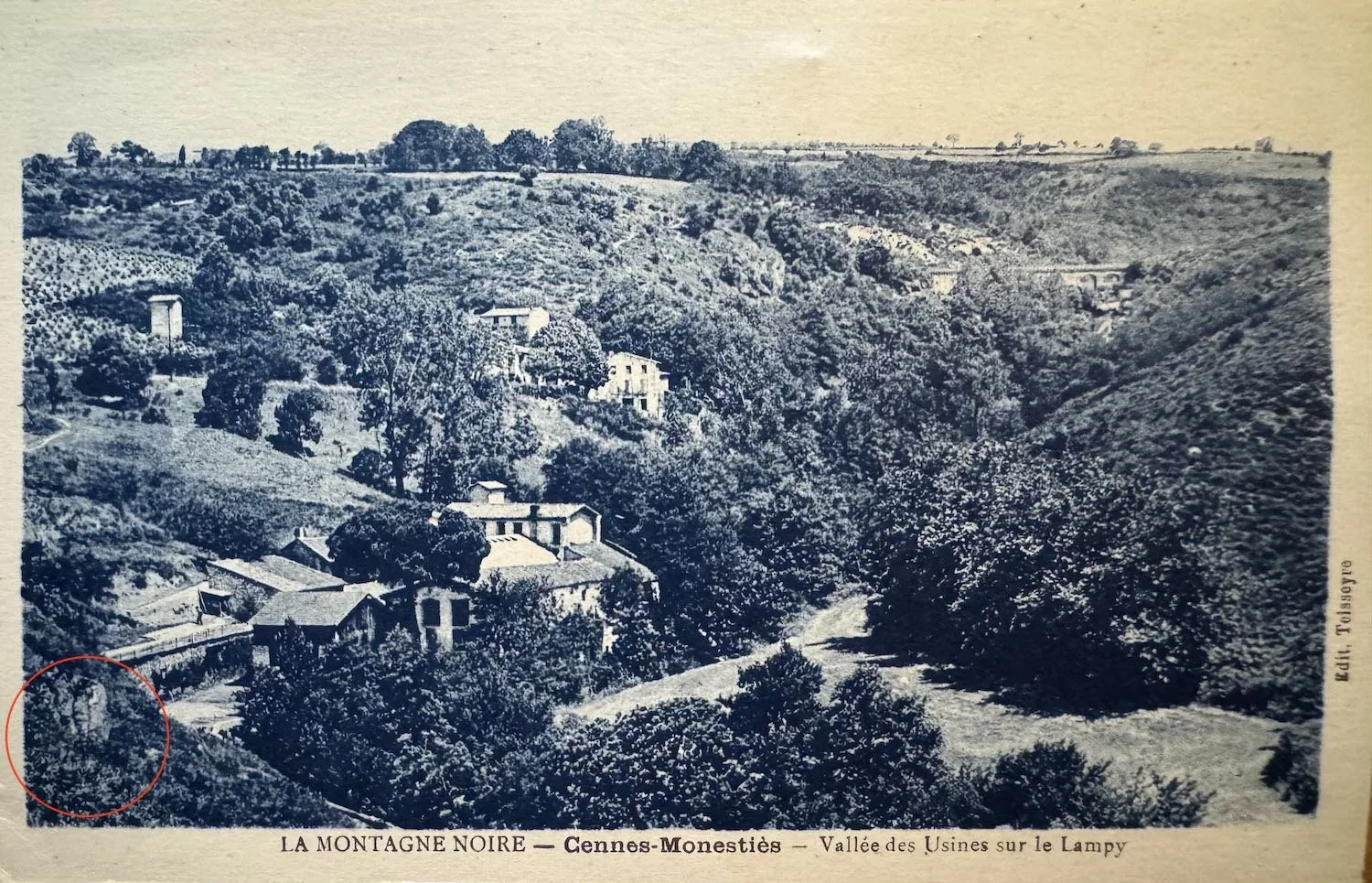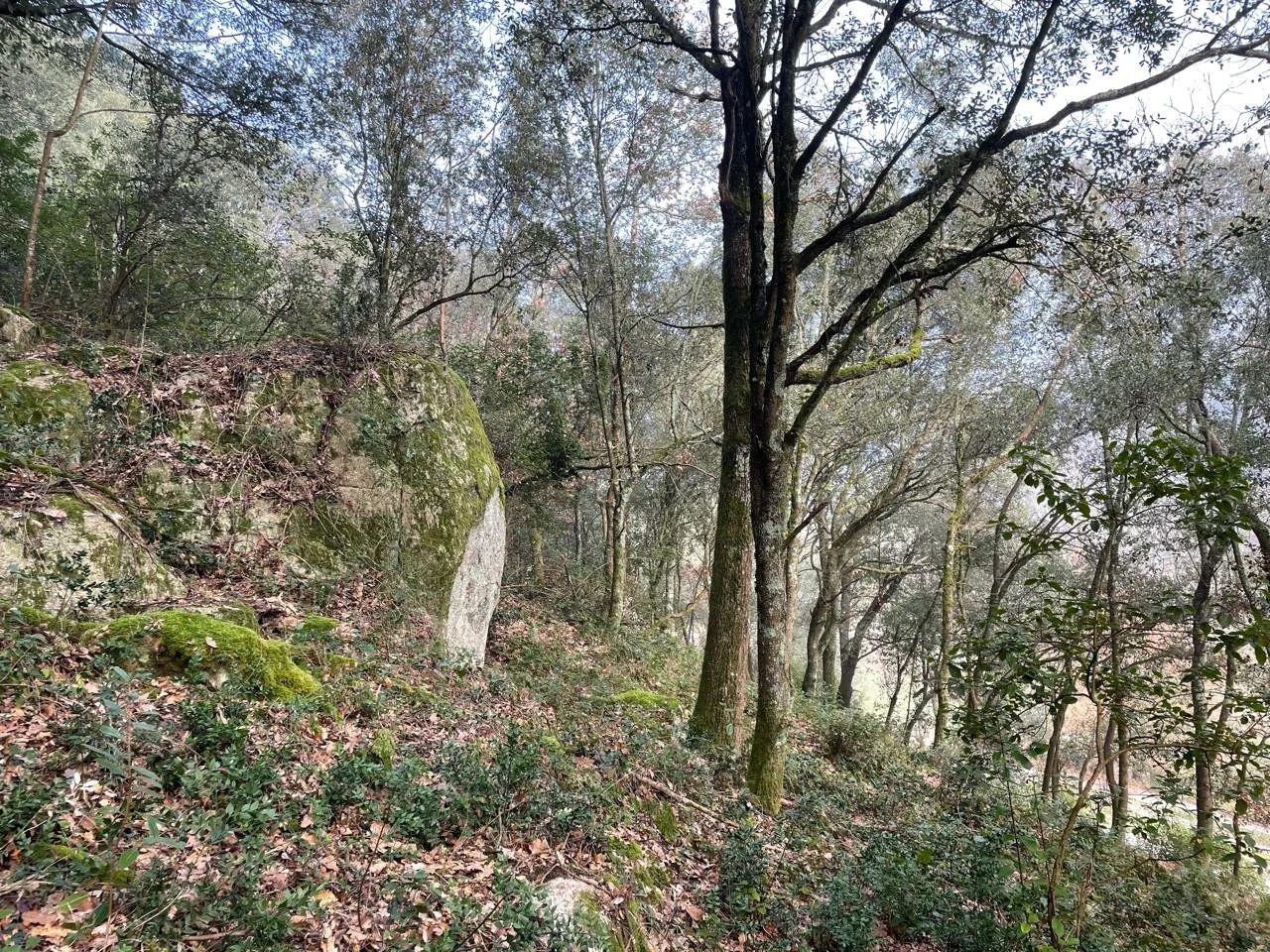FEBRUARY-MARCH 2024 - Part 2 - A Boulder
Layers of rock splitting and warping under the grinding pressure of land moving over earth’s molten core. Tectonic plates configuring into continents and in so doing, buckling to form mountains and valleys. Granite and schist, lime and gneiss lifted from the depths of the past to the surface of the present. We live upon a shifting giant whose long and fitful sleep causes her to heave and turn, pulling heavy sheets and coverlet with her. In more fevered dreams she twists her bedding into folds or wrenches her covers apart. Episodes of dramatic violence as she changes the landscape of her mantle.
So it was between 500 and a 1000 million years ago as the supercontinent of Pangaea was formed by the shifting of the Euramerica and Gondwana landmasses. Amongst the mountainous regions built by this epic shifting was the Massif Central in what would one day be called France. Then, about 300 million years ago, they were rejuvenated and made volcanic when the African and Eurasian landmasses pressed into each other and formed the Alps.
The Massif Central, standing the other side of the Rhône Valley from the Alps, spreads across the middle of the lower half of France, dividing east from west. Descending to the south, it falters at the brink of a latitudinal fault called the Mazamet fault through which the River Thoré flows.
More recently, just 100 to a 150 million years ago, the Iberian crust, itself the eroded mass of even older mountains, was pushed northwards by Africa until it collided with the European crust. Buckling under this pressure, layers of ancient rock carrying fossils of primordial sea creatures rose up, folding into the landmass of Europe and resulting in the dramatic peaks of the Pyrenees and what today is the border between France and Spain. On their northern, French side they descend to a large, tectonic plain.
Over the ensuing 50 million years, the continued northward pressure of the Iberian Peninsula caused the rise of an additional highland or massif on the other, northern side of that stubborn tectonic plain. Added like a spur to the bottom of the Massif Central, it was divided from it only by the Mazamet fault.
This is the Montagne Noire.
The boulder set in the slope of our valley and providing the photographer with his foreground, is made of granite, heaved up through limestone, schist and clay. Over millions of years the softer rock has been eroded by the river as she sculpted her long and winding bed. Winding to accommodate the trenchant presence of this hard rock and others like it whose edges she could only smooth and then leave behind as she descended with the valley floor.
Sat halfway up the side of the valley now, our boulder was joined by vegetation, scrub and trees that came and went, quilting the landscape with green and leaving behind layer after layer of loam and earth and root. Untroubled by the elements, this organic matter thickened until the boulder disappeared. So, the fact that it was again visible when the photographer released his shutter, proud against the grassy slope, suggests that the ground had been exposed for a considerable time. Centuries maybe. The soft, organic matter, brushed away by the elements had joined the river below to be carried along as silt before being deposited in her bed or further off where she joined the sea.
-
It is cold and wet, but I am sitting outside the converted barn of a farmhouse where I am living with the director of the play I am designing and two of the actors. This is where I write each morning before the rehearsals. The sun has not yet risen above the stables but I am thinking about our boulder, smooth-fronted, crevassed on the sides and laced with bramble.
The photographer returned to his studio and in the red glow of his darkroom began developing the negatives. Over the years, this photograph, reproduced as a postcard, was bought from stalls or from the print shop at the front of his studio. But by whom? By day trippers in the area? By those passing through the region from Paris to the more dramatic Pyrenees? Perhaps they thought little of the boulder that helped the photographer frame his composition, or of the giant who lifted it there or the river that sculpted it. Rather, they marvelled at the industry of those who built the Mécanique and the barrage further up the valley. They turned the postcard over and wrote home.
The boulder seems even bigger now, or rather, prouder, and with more of its mass exposed than in the grainy, black and white photograph taken three quarters of a century ago. The earth around must have remained exposed for some decades, unprotected by the canopy of trees that would arrive and which surround it now.
The cobbles under my feet, smoothed by years of passage, stand nonetheless proud of the old lime mortar in which they are set. Made of granite they are slower to erode than the mortar. Everything tells a story.

